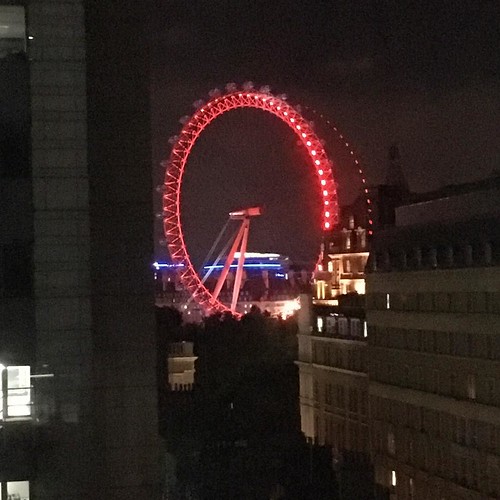Neous Ca2+ sparks before and after the application of 5 mM CaCl2. It is clear that the frequency of Ca2+ sparks was 5.460.8 sparks/100 mm.s in control, significantly increased to 10.460.5 sparks/100 mm.s after application of 5 mM CaCl2 (Figure 6B). The histograms for FDHM and FWHM of Ca2+ sparks indicated an increase in big spark populations, the mean values for FDHM and FWHM were increased from 31.660.6 ms and 2.2960.03 mm in control to 32.160.7 ms and 2.3360.04 mm (All *P,0.05) in the presence of 5 mM CaCl2 (before nspark = 143; after nspark = 318; ncell = 10), respectively (Figure 6D, E). However, the amplitude of Ca2+ sparks in the presence of 5 mM CaCl2 (1.4860.02) was significantly lower than those in control (1.5160.04) (*P,0.05) (Figure 6C). The results showed that elevated extracellular Ca2+ concentration resulted in an increase in big spark populations.Unique Characteristics of Spontaneous Ca2+ Sparks in hiPSC-CMsFigure 4Aa, b shows two typical line-scan images of Ca2+ sparks. An overlay of 160 original Ca2+ sparks was shown in Figure 4Ac. The spatial widths of Ca2+ sparks (Figure 4Ca,b) show that Ca2+ diffusion from the center of Ca2+ sparks to periphery was asymmetric, indicating that the distribution of RyRs in a cluster of Ca2+ release channels is anomalous or inhomogeneous in hiPSC-CMs. Ca2+ sparks also present multiple ridges in the threedimensional plots (Figure 4Ba,b) and temporal profiles (Figure 4Da,b) of Ca2+ sparks, suggesting the these Ca2+ sparks may Madrasin site originate from one or several different clusters of RyRs. About 90 of Ca2+ sparks possess this temporal-spatial feature. However, the spatial width in an overlay of Ca2+ spark showed a symmetrical profile (Figure 4Cc).Calcium Sparks in iPSC-Derived CardiomyocytesFigure 2. Spontaneous Ca2+ transients in hiPSC-CMs. (A) Representative frame-scan (X-Y mode) images of spontaneous Ca2+ transients (a and b). (B) A typical line scan (X-T mode) image of spontaneous Ca2+ transients obtained from white line in panel Aa and (C) the corresponding amplitudes (F/F0) of Ca2+ transients (n = 16). (D) A representative transverse line scan (X-T mode) image obtained from green line 23727046 in panel Aa (a) and the corresponding intensity profiles (b) of Ca2+ transients. Abbreviations: F/F0, fluorescence (F) normalized to baseline fluorescence (F0); s, order Tunicamycin seconds. doi:10.1371/journal.pone.0055266.gEffects of Ryanodine on Ca2+ SparksCa2+ sparks are local and transient calcium release events from a cluster of  RyRs in the SR. Delineating the properties of RyRs in hiPSC-CMs is thus a matter of fundamental importance to Ca2+ sparks. In the present study, the spark frequency FDHM and FWHM showed significant increase (P,0.05), whereas F/F0 was not significant changed after application of 50 nM ryanodine (before nspark = 163; after nspark = 347; ncell = 11), when compared with control (Figure 7A ). These 15755315 results indicated that ryanodine could increase the size of Ca2+ sparks in hiPSC-CMs.DiscussionIn adult cardiac myocytes, Ca2+ spark is an infrequent and stochastic elementary event of Ca2+ release [2]. Ca2+ sparks are often associated with the transverse tubules (TTs) at the Z-disk of a sarcomere where RyRs and L-type Ca2+ channels colocalize [12,14,15]. Furthermore, repetitive Ca2+ sparks may originate from the same RyR cluster [16]. In the present study, repetitive Ca2+ sparks emerged at the same sites were observed in hiPSCCMs. In contrast, such phenomenon has rarely been reported in adult quiescent ve.Neous Ca2+ sparks before and after the application of 5 mM CaCl2. It is clear that the frequency of Ca2+ sparks was 5.460.8 sparks/100 mm.s in control, significantly increased to 10.460.5 sparks/100 mm.s after application of 5 mM CaCl2 (Figure 6B). The histograms for FDHM and FWHM of Ca2+ sparks indicated an increase in big spark populations, the mean values for FDHM and FWHM were increased from 31.660.6 ms and 2.2960.03 mm in control to 32.160.7 ms and 2.3360.04 mm (All *P,0.05) in the presence of 5 mM CaCl2 (before nspark = 143; after nspark = 318; ncell = 10), respectively (Figure 6D, E). However, the amplitude of Ca2+ sparks in the presence of 5 mM CaCl2 (1.4860.02) was significantly lower than those in control (1.5160.04) (*P,0.05) (Figure 6C). The results showed that elevated extracellular Ca2+ concentration resulted in an increase in big spark populations.Unique Characteristics of Spontaneous Ca2+ Sparks in hiPSC-CMsFigure 4Aa, b shows two typical line-scan images of Ca2+ sparks. An overlay of 160 original Ca2+ sparks was shown in Figure 4Ac. The spatial widths of Ca2+ sparks (Figure 4Ca,b) show that Ca2+ diffusion from the center of Ca2+ sparks to periphery was asymmetric, indicating that the distribution of RyRs in a cluster of Ca2+ release channels is anomalous or inhomogeneous in hiPSC-CMs. Ca2+ sparks also present multiple ridges in the threedimensional plots (Figure 4Ba,b) and temporal profiles (Figure 4Da,b) of Ca2+ sparks, suggesting the these Ca2+ sparks may originate from one or several different clusters of RyRs. About 90 of Ca2+ sparks possess this temporal-spatial feature. However, the spatial width in an overlay of Ca2+ spark showed a symmetrical profile (Figure 4Cc).Calcium Sparks in iPSC-Derived CardiomyocytesFigure 2. Spontaneous Ca2+ transients in hiPSC-CMs. (A) Representative frame-scan (X-Y mode) images of spontaneous Ca2+ transients (a and b). (B) A typical line scan (X-T mode) image of spontaneous Ca2+ transients obtained from white line in panel Aa and (C) the corresponding amplitudes (F/F0) of Ca2+ transients (n = 16). (D) A representative transverse line scan (X-T mode) image obtained from green line 23727046 in panel Aa (a) and the corresponding intensity profiles (b) of Ca2+ transients. Abbreviations: F/F0, fluorescence (F) normalized to baseline fluorescence (F0); s, seconds. doi:10.1371/journal.pone.0055266.gEffects of Ryanodine on Ca2+ SparksCa2+ sparks are local and transient calcium release events from a cluster of RyRs in the SR. Delineating the properties of RyRs in hiPSC-CMs is thus a matter of fundamental importance to Ca2+ sparks. In the present study, the spark frequency FDHM and FWHM showed significant increase (P,0.05), whereas F/F0 was not significant changed after
RyRs in the SR. Delineating the properties of RyRs in hiPSC-CMs is thus a matter of fundamental importance to Ca2+ sparks. In the present study, the spark frequency FDHM and FWHM showed significant increase (P,0.05), whereas F/F0 was not significant changed after application of 50 nM ryanodine (before nspark = 163; after nspark = 347; ncell = 11), when compared with control (Figure 7A ). These 15755315 results indicated that ryanodine could increase the size of Ca2+ sparks in hiPSC-CMs.DiscussionIn adult cardiac myocytes, Ca2+ spark is an infrequent and stochastic elementary event of Ca2+ release [2]. Ca2+ sparks are often associated with the transverse tubules (TTs) at the Z-disk of a sarcomere where RyRs and L-type Ca2+ channels colocalize [12,14,15]. Furthermore, repetitive Ca2+ sparks may originate from the same RyR cluster [16]. In the present study, repetitive Ca2+ sparks emerged at the same sites were observed in hiPSCCMs. In contrast, such phenomenon has rarely been reported in adult quiescent ve.Neous Ca2+ sparks before and after the application of 5 mM CaCl2. It is clear that the frequency of Ca2+ sparks was 5.460.8 sparks/100 mm.s in control, significantly increased to 10.460.5 sparks/100 mm.s after application of 5 mM CaCl2 (Figure 6B). The histograms for FDHM and FWHM of Ca2+ sparks indicated an increase in big spark populations, the mean values for FDHM and FWHM were increased from 31.660.6 ms and 2.2960.03 mm in control to 32.160.7 ms and 2.3360.04 mm (All *P,0.05) in the presence of 5 mM CaCl2 (before nspark = 143; after nspark = 318; ncell = 10), respectively (Figure 6D, E). However, the amplitude of Ca2+ sparks in the presence of 5 mM CaCl2 (1.4860.02) was significantly lower than those in control (1.5160.04) (*P,0.05) (Figure 6C). The results showed that elevated extracellular Ca2+ concentration resulted in an increase in big spark populations.Unique Characteristics of Spontaneous Ca2+ Sparks in hiPSC-CMsFigure 4Aa, b shows two typical line-scan images of Ca2+ sparks. An overlay of 160 original Ca2+ sparks was shown in Figure 4Ac. The spatial widths of Ca2+ sparks (Figure 4Ca,b) show that Ca2+ diffusion from the center of Ca2+ sparks to periphery was asymmetric, indicating that the distribution of RyRs in a cluster of Ca2+ release channels is anomalous or inhomogeneous in hiPSC-CMs. Ca2+ sparks also present multiple ridges in the threedimensional plots (Figure 4Ba,b) and temporal profiles (Figure 4Da,b) of Ca2+ sparks, suggesting the these Ca2+ sparks may originate from one or several different clusters of RyRs. About 90 of Ca2+ sparks possess this temporal-spatial feature. However, the spatial width in an overlay of Ca2+ spark showed a symmetrical profile (Figure 4Cc).Calcium Sparks in iPSC-Derived CardiomyocytesFigure 2. Spontaneous Ca2+ transients in hiPSC-CMs. (A) Representative frame-scan (X-Y mode) images of spontaneous Ca2+ transients (a and b). (B) A typical line scan (X-T mode) image of spontaneous Ca2+ transients obtained from white line in panel Aa and (C) the corresponding amplitudes (F/F0) of Ca2+ transients (n = 16). (D) A representative transverse line scan (X-T mode) image obtained from green line 23727046 in panel Aa (a) and the corresponding intensity profiles (b) of Ca2+ transients. Abbreviations: F/F0, fluorescence (F) normalized to baseline fluorescence (F0); s, seconds. doi:10.1371/journal.pone.0055266.gEffects of Ryanodine on Ca2+ SparksCa2+ sparks are local and transient calcium release events from a cluster of RyRs in the SR. Delineating the properties of RyRs in hiPSC-CMs is thus a matter of fundamental importance to Ca2+ sparks. In the present study, the spark frequency FDHM and FWHM showed significant increase (P,0.05), whereas F/F0 was not significant changed after  application of 50 nM ryanodine (before nspark = 163; after nspark = 347; ncell = 11), when compared with control (Figure 7A ). These 15755315 results indicated that ryanodine could increase the size of Ca2+ sparks in hiPSC-CMs.DiscussionIn adult cardiac myocytes, Ca2+ spark is an infrequent and stochastic elementary event of Ca2+ release [2]. Ca2+ sparks are often associated with the transverse tubules (TTs) at the Z-disk of a sarcomere where RyRs and L-type Ca2+ channels colocalize [12,14,15]. Furthermore, repetitive Ca2+ sparks may originate from the same RyR cluster [16]. In the present study, repetitive Ca2+ sparks emerged at the same sites were observed in hiPSCCMs. In contrast, such phenomenon has rarely been reported in adult quiescent ve.
application of 50 nM ryanodine (before nspark = 163; after nspark = 347; ncell = 11), when compared with control (Figure 7A ). These 15755315 results indicated that ryanodine could increase the size of Ca2+ sparks in hiPSC-CMs.DiscussionIn adult cardiac myocytes, Ca2+ spark is an infrequent and stochastic elementary event of Ca2+ release [2]. Ca2+ sparks are often associated with the transverse tubules (TTs) at the Z-disk of a sarcomere where RyRs and L-type Ca2+ channels colocalize [12,14,15]. Furthermore, repetitive Ca2+ sparks may originate from the same RyR cluster [16]. In the present study, repetitive Ca2+ sparks emerged at the same sites were observed in hiPSCCMs. In contrast, such phenomenon has rarely been reported in adult quiescent ve.
